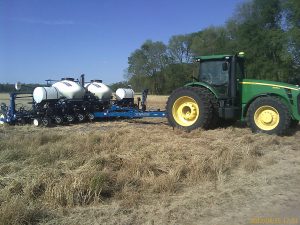Many may have already planted. Some have stopped planting other crops such and peanut and cotton due to cool soils and started planting soybean instead. Regardless, an advantage of soybean is that it tolerates a wide range of planting dates. I’ve found no advantage to planting soybean before May and have seen little yield penalty from planting as late as the first week of June, under most conditions. There are advantages to planting early and planting late, but that is not the subject of this post. Contact me for more detailed discussion on this matter-it will take more that a few comments.
With that said, I’ve always preferred May planting due to less risk of frost damage and slow emergence that is common with earlier planting. Still there are big differences in management when planting in early- versus late-May. Here I’ll review a few of these.
- Plant earliest maturing varieties first, then move to later maturing varieties. This will spread risk and harvest dates. We have however observed that early-planting and/or early-maturing varieties work better under productive soils/fields. If planting on poor soils/unproductive fields, later-maturing varieties will extend the growing season and push the critical pod- and seed-filling stages to less stressful times of the year.
- Always plant into moisture. But don’t plant more than 1 inch deep when soils are cool or emergence will be delayed substantially. One-half to 3/4 of an inch is adequate. For later planting dates when soils are warm, one can plant as deep as 1.5 inches and get rapid emergence.
- If planting into cool soils (usually before mid-May), use a good fungicide seed treatment. It could take 10 days or more for the soybean to emerge; plenty of time for soil-born seedling diseases to attack.
- A final plant population of 70 to 100 thousand plants per acre is usually adequate for full-season plantings. This means that 95 to 130 thousand seed per acre is enough, depending on expected emergence. Our research and in other states have observed that less seed is needed with low-yielding fields and greater seeding rates are needed with high-yielding fields. The problem is knowing how much the field will yield.
As always, contact me for more details regarding these tips or discuss other early-season soybean issues.

